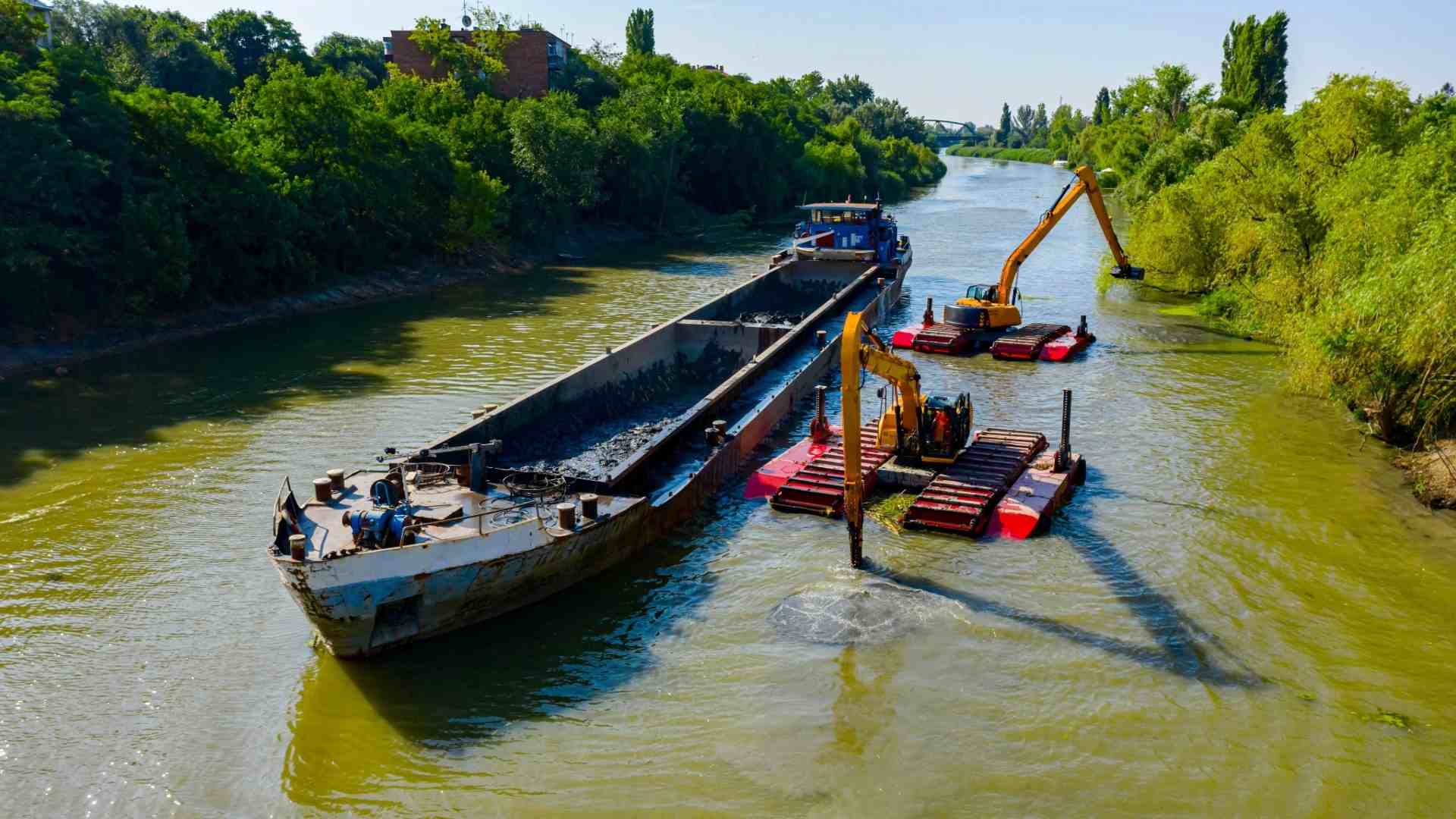Introduction
Earlier this month, visitors to Magic Kingdom witnessed a dramatic change as the beloved Rivers of America was completely drained. While casual guests may see this as simply an empty riverbed, the scene marks the beginning of a major project that combines demolition, construction, and a critical step in waterway management—river dredging.
For decades, the Rivers of America has been a centerpiece of Frontierland, hosting iconic attractions like the Liberty Belle Riverboat and the Tom Sawyer Island rafts. But like any waterway, especially one that is artificially maintained, sediment builds up over time. That’s where dredging comes in.
Why Disney Drains Rivers of America
The decision to drain the river was not taken lightly. Any large-scale project at a theme park involves months of planning, coordination, and logistics. In this case, Walt Disney World first had to remove the Liberty Belle Riverboat and other vessels from the waterway. Once the boats were relocated, crews were finally able to begin draining the river in preparation for both dredging and demolition.
The draining process revealed years of accumulated muck, silt, and debris that settled at the bottom of the river. Without regular maintenance, waterways like this can become clogged, stagnant, and visually unappealing. That’s why river dredging is essential—not only to prepare the area for demolition but also to maintain water quality and preserve the guest experience.
The Role of Dredging in Theme Parks
When people think of dredging, they often picture large harbors, ports, or industrial rivers being cleared for shipping. But dredging has a role even in theme parks like Magic Kingdom.
Here, the process involves removing layers of sediment and organic buildup from the man-made waterway. This is especially important for Rivers of America, where attractions rely on a consistent water depth for navigation. Without dredging, the Liberty Belle would risk scraping the bottom, and the river would not look as pristine as guests expect.
Disney crews use specialized equipment to scoop out sediment, clear vegetation, and stabilize the riverbed. The result is a clean, navigable waterway ready for either future use or redevelopment. In this case, dredging also prepares the river for upcoming demolition work tied to larger park updates.
Environmental and Practical Benefits of River Dredging
Even though the Rivers of America is artificial, the benefits of river dredging are similar to those in natural waterways:
- Improved Water Flow – Sediment buildup slows water movement, which can create stagnant areas. Dredging restores proper circulation.
- Enhanced Navigation – For attractions like the Liberty Belle Riverboat, consistent depth is critical. Dredging ensures smooth operation.
- Aesthetic Appeal – Clear, debris-free waterways enhance the guest experience, making the park look clean and well cared for.
- Preparation for Construction – In this case, dredging supports demolition crews by providing a stable, muck-free environment for machinery and future work.
Demolition Work to Follow
With the river drained and dredging underway, crews are also preparing for demolition around the waterway. This phase will likely involve dismantling older structures, regrading the riverbed, and possibly reshaping the banks of the waterway. Demolition is often the most visible part of the process, but it would not be possible without the initial step of dredging.
Guests walking through Frontierland may see construction walls, cranes, and heavy equipment in use. Disney typically works quickly and efficiently, balancing the need for essential infrastructure work with the goal of minimizing disruption to the guest experience.
A Glimpse Behind the Magic
While most Disney fans focus on attractions, parades, and characters, projects like this highlight the behind-the-scenes maintenance that keeps Magic Kingdom running. River dredging is not glamorous, but it is a crucial part of ensuring the park remains safe, clean, and immersive.
Just as harbors, rivers, and marinas across the world rely on dredging to stay functional, Disney applies the same principle within its theme parks. The difference is that here, dredging supports not commercial shipping, but storytelling and guest enjoyment.
Looking Ahead
As work progresses, Disney has not yet shared a full timeline for when the Rivers of America will reopen or what new features might emerge after demolition. However, history shows that Disney often uses major projects like this to refresh areas of the park, improve infrastructure, and enhance storytelling.
When the Rivers of America returns, it will likely feature a cleaner, better-maintained waterway thanks to river dredging, as well as any new enhancements Disney has planned.
For now, guests can watch history in the making as dredging and demolition reshape one of Magic Kingdom’s most iconic landscapes.
Conclusion
The draining of the Rivers of America at Magic Kingdom marks more than just the start of demolition—it underscores the importance of dredging in both practical and thematic ways. By removing muck and sediment through river dredging, Disney ensures its waterways remain navigable, visually appealing, and ready for future projects.
Whether in a busy shipping port or a magical theme park, dredging continues to play an essential role in transforming and maintaining waterways. At Disney, it’s just one more example of the work that goes unseen but is vital to creating the immersive worlds guests know and love.
